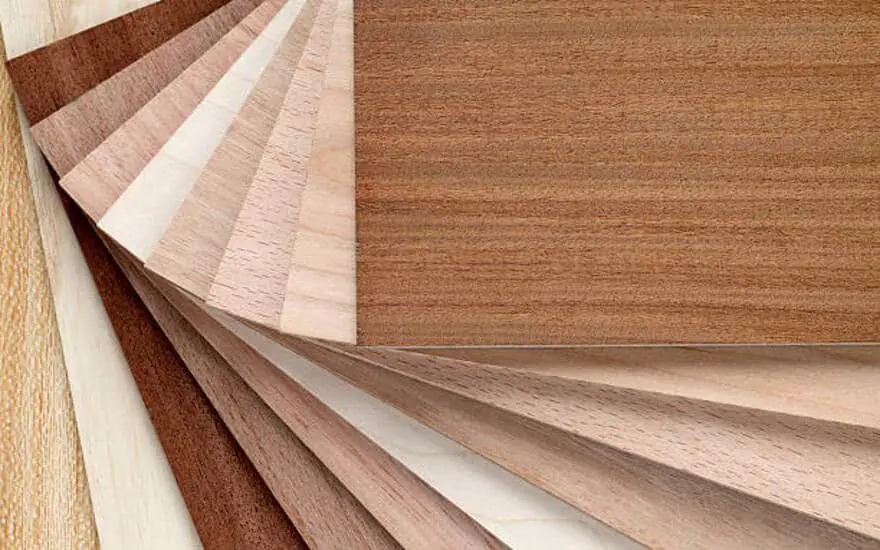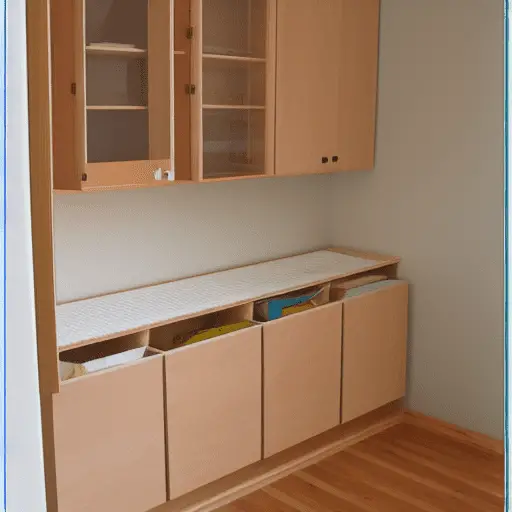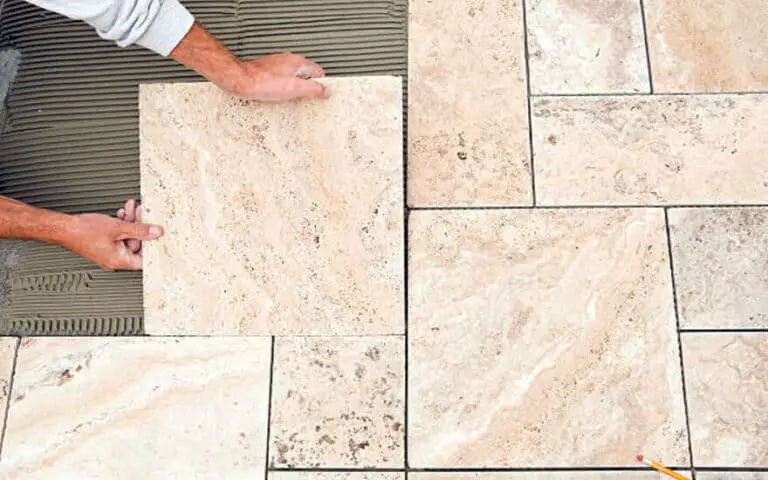No, It’s not same.
I understand that choosing the right flooring can be overwhelming. Here, I’ll compare the features and benefits of laminate flooring and engineered hardwood to see which is best suited for your needs.

What is the difference between Engineered Wood Floors and Laminate Floors?
It’s easy to get confused about the difference between Laminate and engineered wood flooring, but there are some key differences to consider. Engineered hardwood is made with a thin layer of genuine wood over multiple layers of plywood or fiberboard.
Laminate flooring is made from several layers of melamine-infused paper that are laminated together to create a unique pattern. Lastly, both engineered hardwood and laminate flooring have a high resale value. However, engineered hardwood will last longer than laminate flooring.
1. Appearance
When it comes to appearance, both engineered wood and laminate flooring have a similar look. However, there are key differences between them. Laminate is only a replica of wood, attempting to imitate the look and feel of real wood.
High-quality laminates have become quite adept at replicating the appearance of real hardwood. So if you want a floor that looks like real hardwood, you may opt for engineered hardwood floors instead.
2. Durability
Regarding durability, engineered hardwood and laminate flooring are tough and able to withstand the wear and tear of a regular hardwood floor. The Laminate’s sturdy, scratch-resistant wear layer makes this floor strong in the durability category.
Since the top is real wood, it stands up to scrutiny. Engineered hardwood is a thicker flooring typically nailed or glued down, so it does not have a problem with flexing. It can, however, be susceptible to water damage if spills aren’t attended to promptly.
3. Installation
Regarding installation, there are a few differences between engineered hardwood and laminate flooring. Engineered hardwood and laminate flooring are fairly easy to install, but laminate flooring is slightly easier for do-it-yourselfers.
The subfloor requirements are significantly different for various types of flooring. A laminate floor may be floated over any other flooring except for carpet. The subfloor may need to be nailed or glued down to properly install an engineered hardwood floor.
4. Cleaning and Maintenance
Regarding cleaning and maintenance, engineered hardwood and laminate floors require regular sweeping, vacuuming, and mopping. With engineered hardwood, you’ll want to use a damp mop or cleaner specifically designed for hardwood floors, while a laminate cleaner can be used for Laminate.
Laminate flooring is far easier to maintain than engineered wood flooring, as it is more scratch and dent resistant. You’ll want to be careful with liquids on Laminate, as they can cause damage if not quickly wiped up. With engineered hardwood, you’ll need to be diligent about cleaning spills quickly and avoiding standing water on the floor.
5. Resale Value
Regarding resale value, hardwood floors offer the greatest return on investment. Investing in a high-quality laminate floor or engineered hardwood floor can also moderately raise a home’s value. While engineered wood can increase your home’s value almost as much as hardwood flooring, laminate flooring will likely add less appreciable value to your home.
Additionally, laminate floors may be seen as more of a faux wood and may not be as desirable to potential buyers as genuine hardwood.
6. Lifespan
When it comes to lifespan, engineered hardwood and Laminate flooring can last long if properly maintained. However, engineered hardwood floors are more durable in the long run since they are constructed with real wood layers. On the other hand, laminate flooring is made from composite materials, making it more likely to wear over time.
Proper installation and regular maintenance can increase the lifespan of both materials. When considering the lifespan of either material, it is important to factor in the cost of repairs or replacements that may become necessary over time.
7. Moisture Resistance
Regarding moisture resistance, engineered hardwood floors offer a slight advantage over laminate floors. Laminate is slightly more water-resistant, but engineered hardwood is better at resisting moisture penetration and can handle spills better.
Plus, engineered hardwood floors can be refinished multiple times, while Laminate will need to be replaced if it gets excessive water damage. Ultimately, it’s still important to take proper care when dealing with spills or moisture in either type of flooring.
8. Thickness
When it comes to thickness, both engineered hardwood and laminate flooring have their unique benefits. Engineered hardwood is a thicker flooring typically nailed or glued down, so it does not have a problem with flexing.
On the other hand, thicker engineered floors are more durable and can be sanded and refinished multiple times. Laminate flooring resists scratching and denting but does not allow sanding or refinishing. Therefore, both types of flooring have unique advantages regarding thickness.
9. Replacement Options
When looking at Laminate versus engineered hardwood flooring, replacement options are also worth considering. Laminate flooring is designed to be more easily replaced in the event of damage, as it can be snapped in and out.
On the other hand, engineered wood floors are more difficult to replace because they have to be nailed or glued down. If an engineered wood plank is damaged, the entire floor will need to be replaced.
Structural Differences between Laminate and Engineered Hardwood
Regarding structural differences, laminate flooring works similarly to engineering. It comprises different layers but starts with an HDF high-density fiber core, with the top layer being a photographic image of wood.
Unlike Laminate, however, the layers in engineered wood flooring are all made of wood. The configurations of the layers within engineered wood flooring vary, but the same principle applies – a core to provide stability and strength, with a top layer of real hardwood. This makes engineered hardwood a more durable and stable flooring option than Laminate.
1. Construction of Laminate Flooring
The construction of laminate flooring is similar to engineered wood but with a few differences. The top layer of Laminate is usually a high-density fiberboard core (HDF) that is covered with a thin layer of melamine to make it resistant to wear and tear.
This core is then topped with a decorative layer that gives the look and feel of real wood. Laminate also has a backing layer that helps with sound insulation and adds stability to the flooring. Laminate floors are much easier to install than engineered wood, as they don’t require nailing or glue.
2. Construction of Engineered Hardwood Flooring
Engineered hardwood floors are constructed with a strong core, usually made from plywood or high-density fiberboard. The core is then topped with a layer of real hardwood and sealed with a finish. The hardwood layer is usually about 1/10th of an inch thick but can be thicker depending on the product.
This type of construction gives the floor strength and stability while still looking like a solid hardwood floor. Additionally, engineered hardwood floors are often pre-finished, so they are ready to install immediately and require less maintenance than traditional hardwood floors.
3. Surface Differences between Laminate and Engineered Hardwood
The surface differences between engineered hardwood and laminate flooring are quite profound. Engineered hardwood has a solid surface, making it look and feel more like solid hardwood. On the other hand, laminate flooring has a printed image on its surface that can mimic the look of hardwood, but it is different.
Laminate flooring has a thin layer that protects it from wear and tear but is not as strong as engineered hardwood. While engineered hardwood can be sanded and refinished multiple times, laminate flooring cannot. If you want to change the look of your laminate flooring, you will need to replace it entirely.
Summary
In conclusion, when comparing Laminate and engineered hardwood flooring, there are a few key things to keep in mind. Laminate is more cost-effective than engineered hardwood, is easier to maintain, and has a longer lifespan.
On the other hand, engineered hardwood offers more natural aesthetics and a higher resale value. It comes down to personal preference and budget when deciding which flooring is best for you.






